






VSE works on a large variety of projects and we design efficiently and effectively with all applications of conventional materials. We fundamentally believe that green engineering is always good engineering and that good engineering can always be green engineering. There is an appropriate material use and strategy that is unique for every project's individual set of limiting variables.
Below we have compiled a list of materials we design with which, if used appropriately, can be particularly low carbon and support the most sustainable designs.
As carbon emissions have become the leading urgent environmental concern of sustainable building practices, VSE offers the service of quantifying the volume of embodied carbon the material choices in your structure could be responsible for. Embodied carbon refers to carbon dioxide emitted during the manufacture, transport and construction of building materials.
VSE strives to provide information guidance needed to design against the hazards of unsustainable construction as efficiently as we design against all other safety hazards documented in the building code.
According to the U.S. Environmental Protection Agency, buildings account for:
Designing structures with green materials and practices in mind provides a great opportunity to make a significant, positive impact on the environment and the people who occupy the building. Explore below to learn about the different building materials and construction methods that promote sustainability.
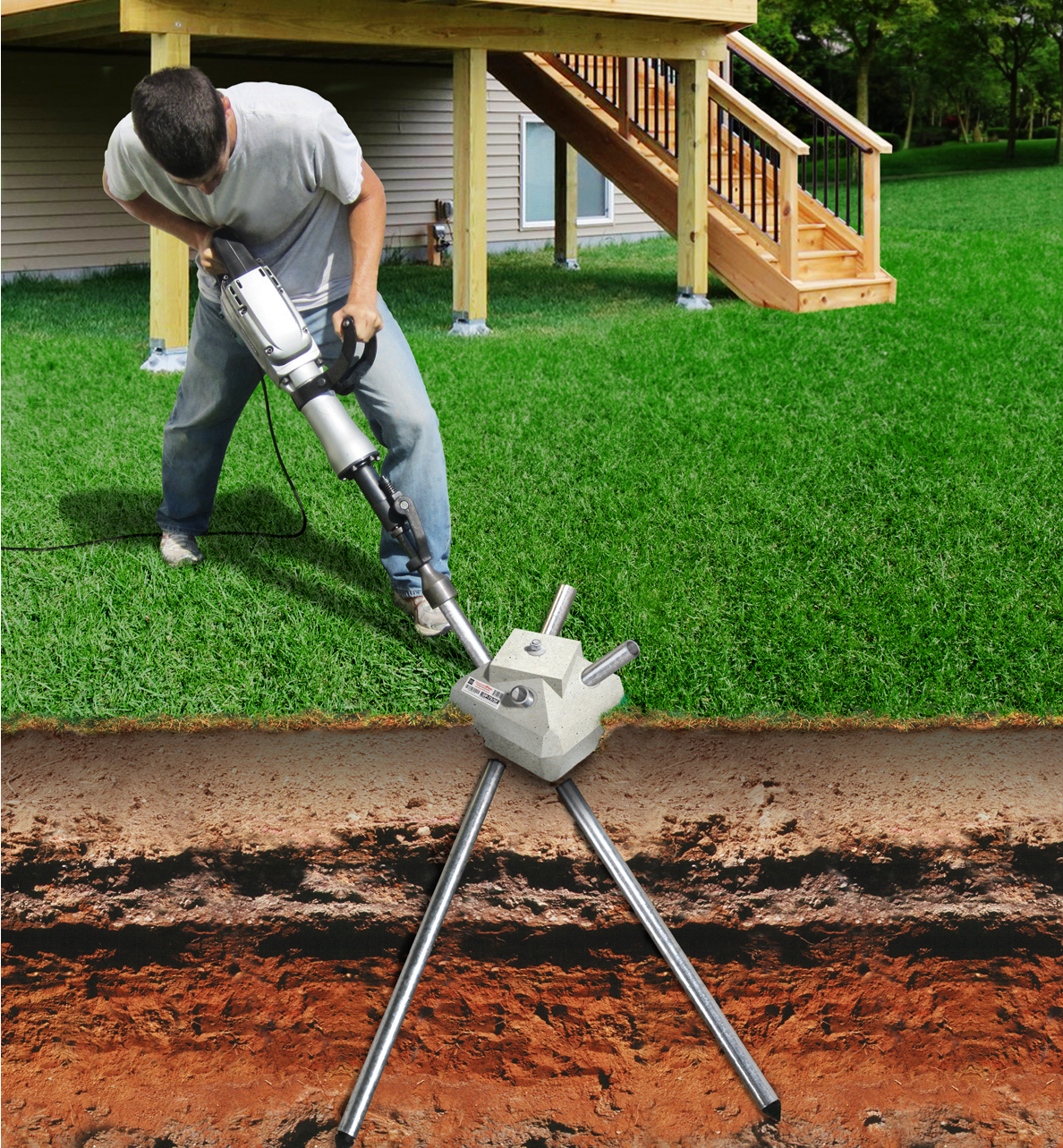
Diamond Piers are gravity bearing foundations that also allow for lateral support. These foundation systems require minimal soil excavation and no concrete pouring on site. The system uses a pre-cast concrete head with four pin rods that are drilled into the earth below the pre-cast head. The benefit of this system is reduced site disturbance and reduced concrete usage. https://www.diamondpiers.com/
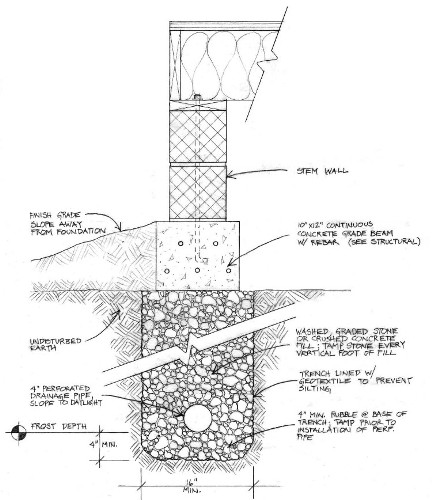
Rubble trenches are bearing foundation systems. A tamped aggregate base is used to create a trench that extends below the frost line. Above the aggregate a concrete grade beam with a small stem wall is used to distribute an even load to the tamped aggregate below. Using a rubble trench can allow for a reduction in the use of concrete on a project, which commonly has high embodied carbon.
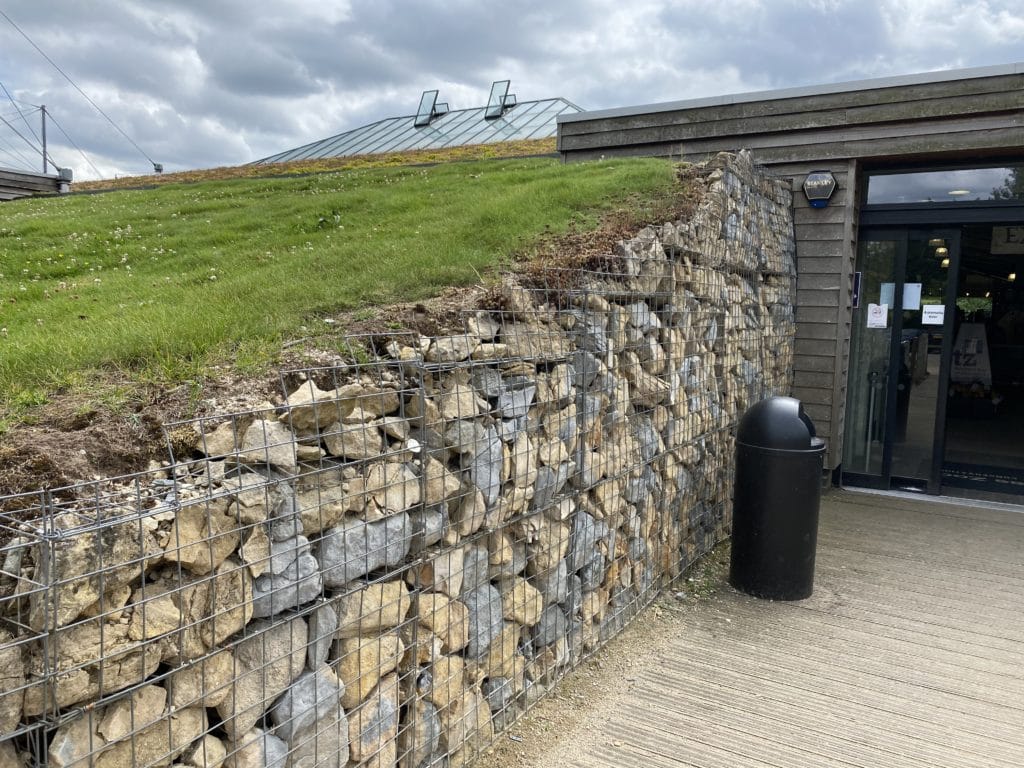
Passive retaining wall systems are gravity walls that use their own mass and design angle as a counterbalance to resists the over and sliding effects exhibited by the soil behind them. If low or no cementitious or recycled cementitious products are used, these designs can allow for a reduction in the use of concrete on a project, which commonly has high embodied carbon

If applicable, geopiers can use soil stabilization to mitigate the need for concrete pier systems. Some geopier options use low or no cement and these designs can allow for a reduction in the use of concrete on a project, which commonly has high embodied carbon.
Decreasing cement content in concrete mixes can significantly decrease a buildings overall embodied carbon. Methods used to decrease cement content can be, though are not limited to: The use of Supplementary Cementitious Materials (SCM) such as fly ash and slag, which are byproducts of the coal and steel industry, specifying longer cure times for required compressive strengths, addition of high quality aggregate or new aggregate and admixture technologies which increase the performance of the mix.
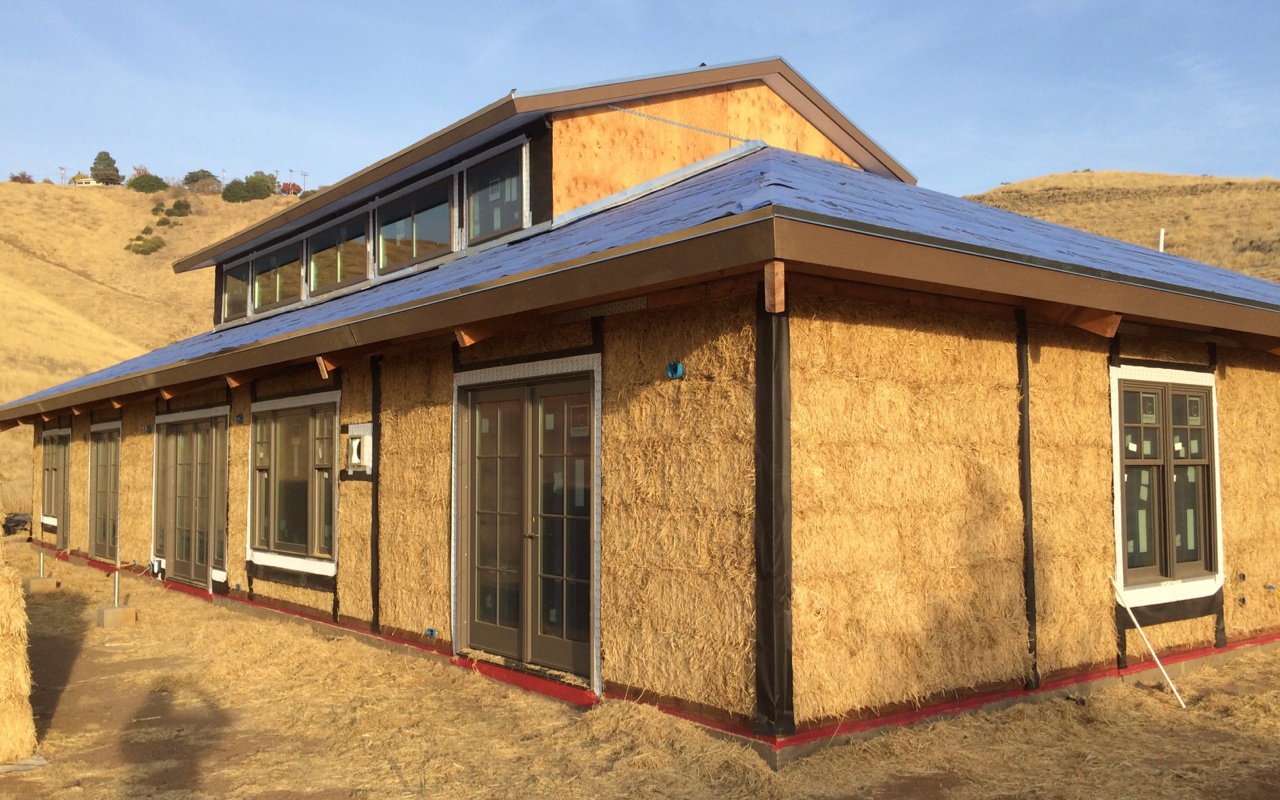
Straw bale walls consists of straw bales, commonly an agricultural byproduct, acting as large blocks stacked similar to masonry construction with protective, and often structural plaster skins on each face of the wall. The plaster skins are commonly clay, lime, lime-cement, and clay-cement and can be reinforced with mesh systems. Since wheat and rice crops annually renew, the carbon contained in the bio-based straw product can be considered sequestered or stored in the building for the building's life.
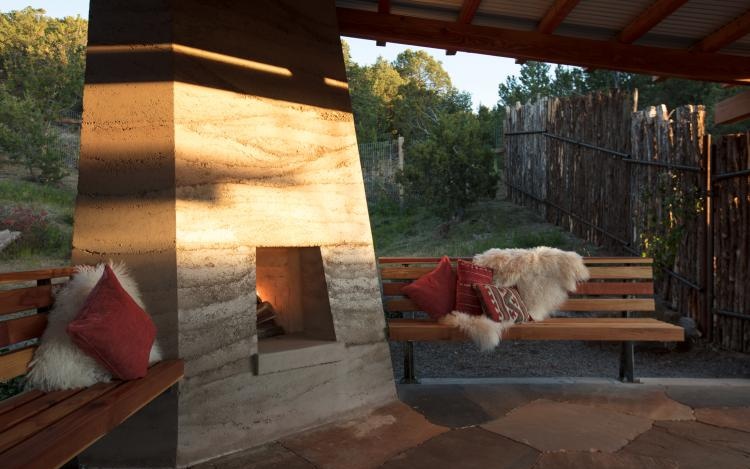
Rammed Earth is an ancient clay based wall system built by compressing or "ramming" the mix in sequential lifts. Conventional designs often include cement and steel reinforcing of varying quantities.

Watershed Blocks use rammed earth technology to create a CMU/cinder block equivalent. This product can decrease the required cement in a CMU system while keeping the shape that masons are familiar with. https://watershedmaterials.com
Maximizing insulation by decreasing the quantity of wood studs can decrease operational carbon use in a building. Most wood framed homes use framing at 16" o.c.. With advanced framing techniques, the spacing of joists is reconsidered for the specific loads on the project (usually allowing framing to be spaced at 24" o.c.). Further reduction in wood framing is achieved with a single top plate and attention to detail around corners, at window and point load framing.
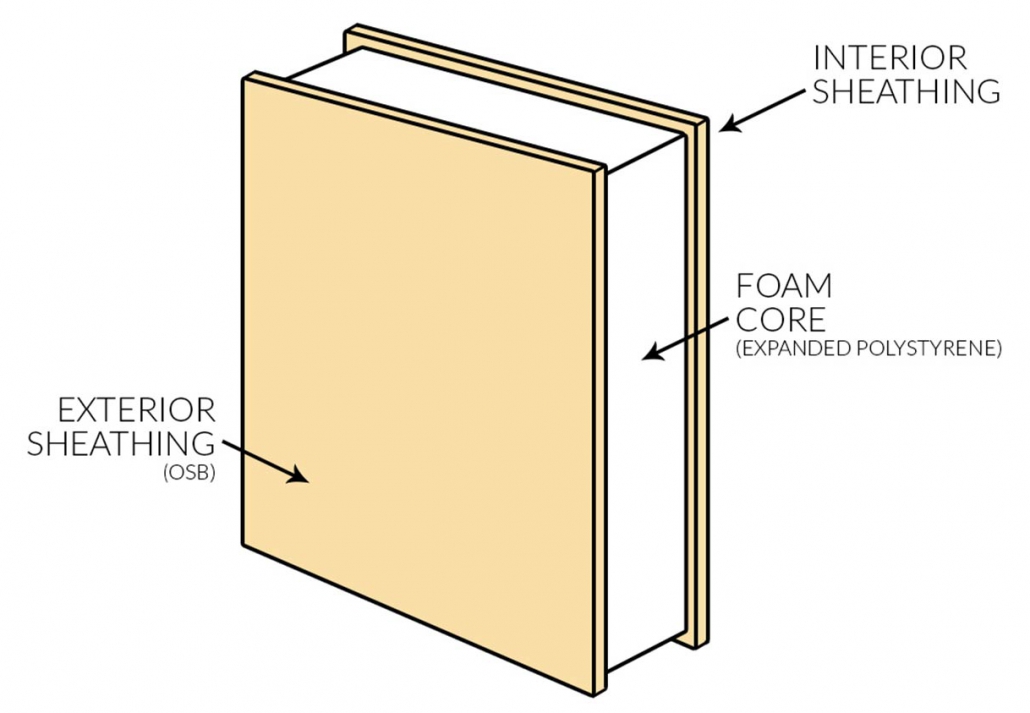
Structural Insulated Panel (SIP) construction consists of an insulated foam core sandwiched between two structural facing systems. The wall sandwich package system can reduce material use and construction waste. Embodied carbon and toxicity of certain insulation materials which can be used in SIP construction should be considered.
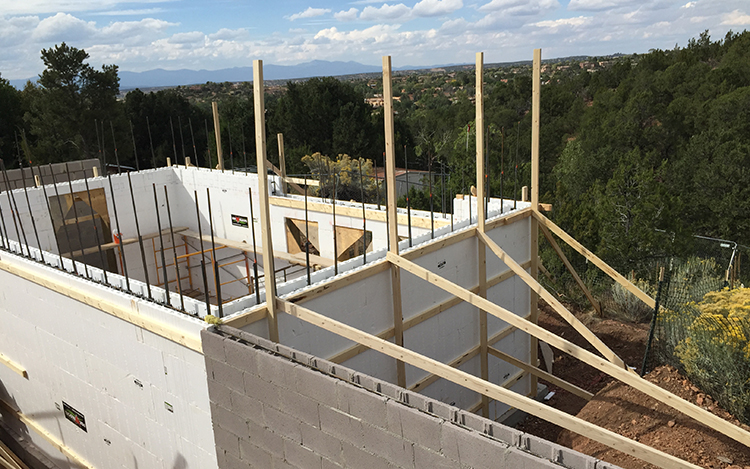
Insulated Concrete Forms (ICF) act as formwork for concrete walls and can reduce construction waste while adding insulation. ICF can be concrete filled foam forms or Faswall blocks (https://faswall.com), which are Cement coated wood chips that are formed into an ICF shape. Embodied carbon and toxicity of certain insulation materials which can be used in ICF construction should be considered.
Earthbag construction is a clay based wall system made from the build up of tube shaped bags filled with a clay and aggregate mix. The design can consist of varying forms of reinforcement pinning.
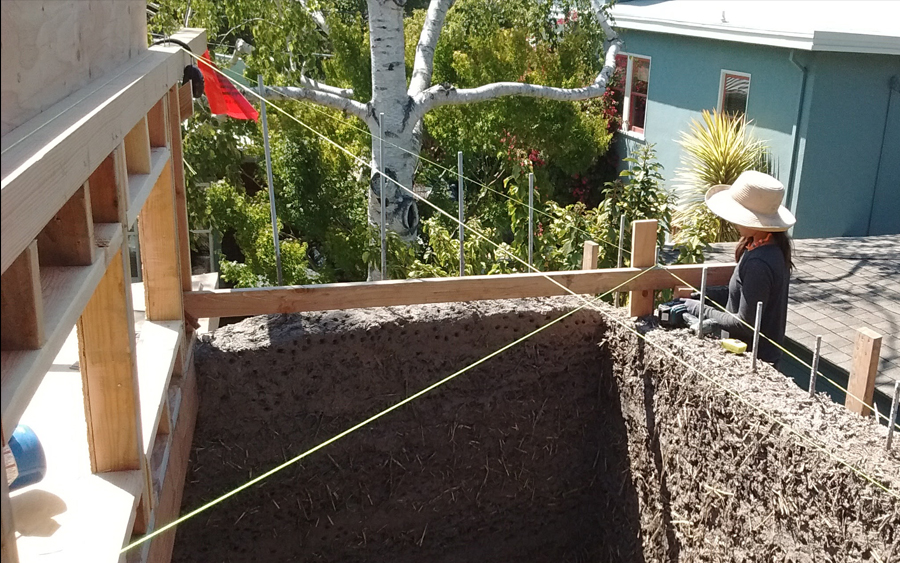
Cob is a traditional wall system made of a composite building material consisting of refined clay or clay subsoil wet-mixed with loose straw and sometimes sand. Cob is also known as monolithic adobe. Steel and other forms of reinforcing beyond the straw matrix can be incorporated into the designs.
Masonry based wall system consisting of refined clay or clay subsoil wet-mixed and sometimes with loose straw and sand. Steel and other forms of reinforcing can be incorporated into the designs.
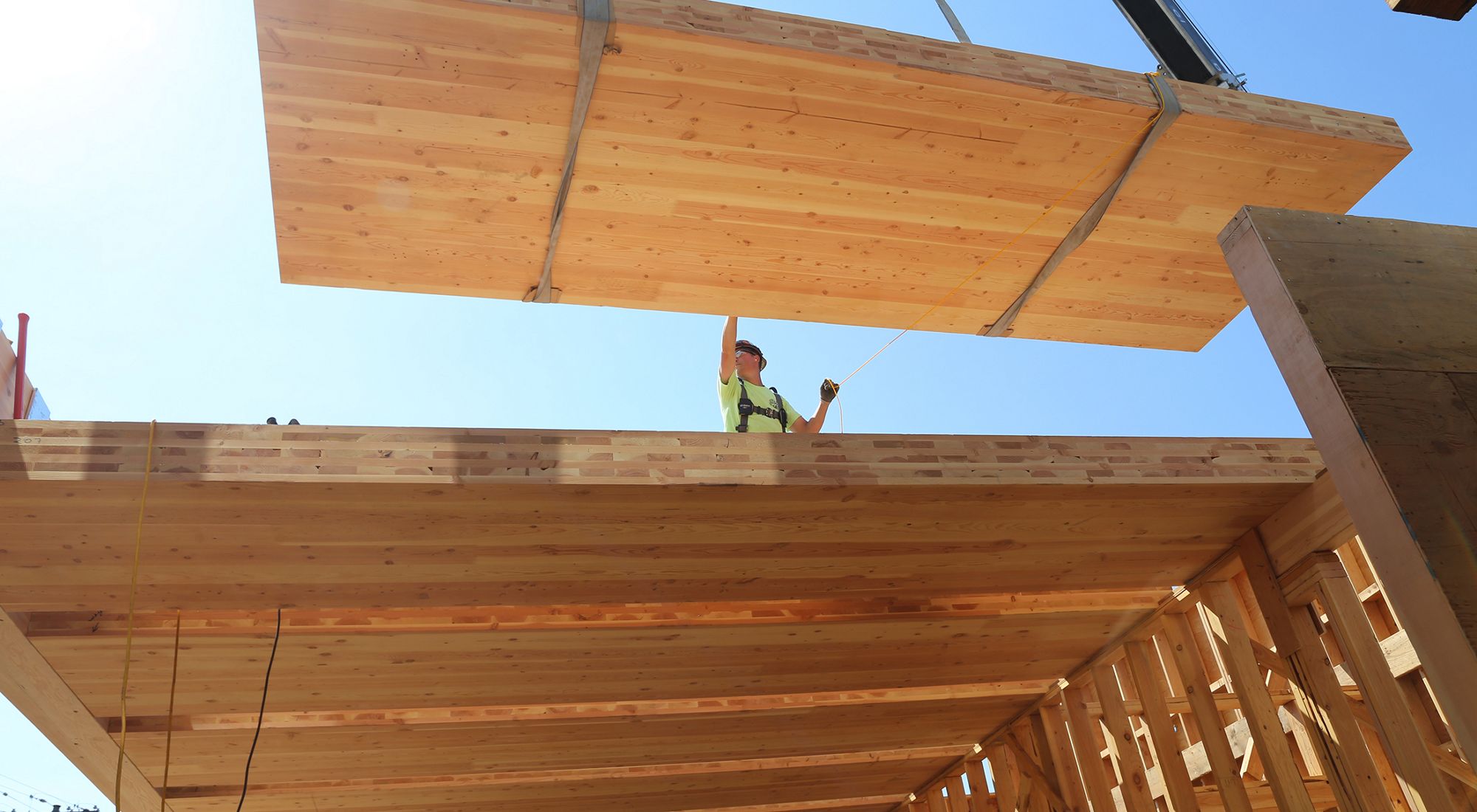
Cross-laminated timber (CLT) is a large-scale, prefabricated, solid engineered wood panel. CLT can result in minimal construction waste. CLT technology offers a designer the opportunity to use more wood, harvested from average size trees, to construct larger structures than previously possible. If wood is obtained from a sustainable source, the carbon contained in the bio-based product can be considered sequestered or stored in the building for the building's life.